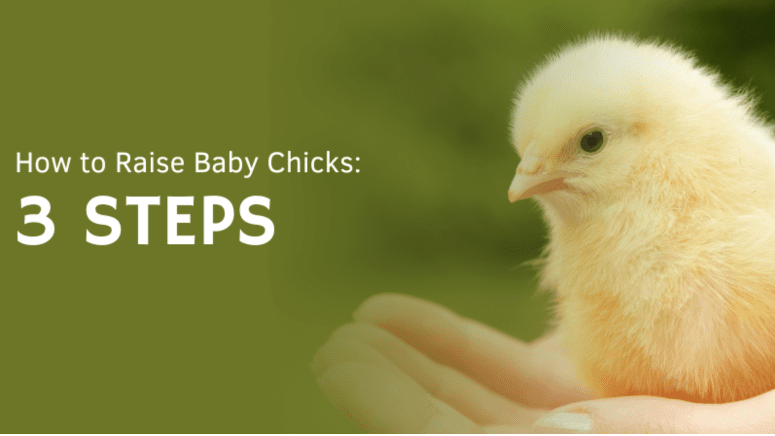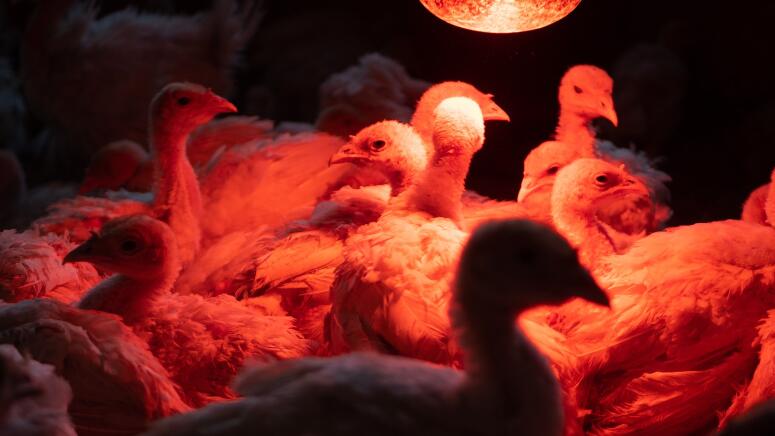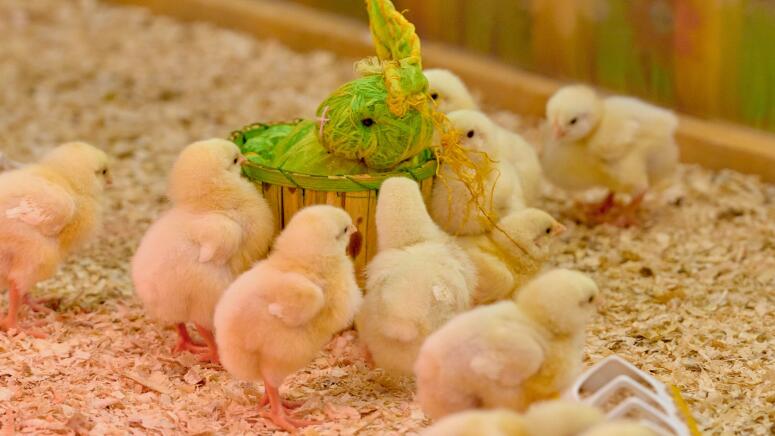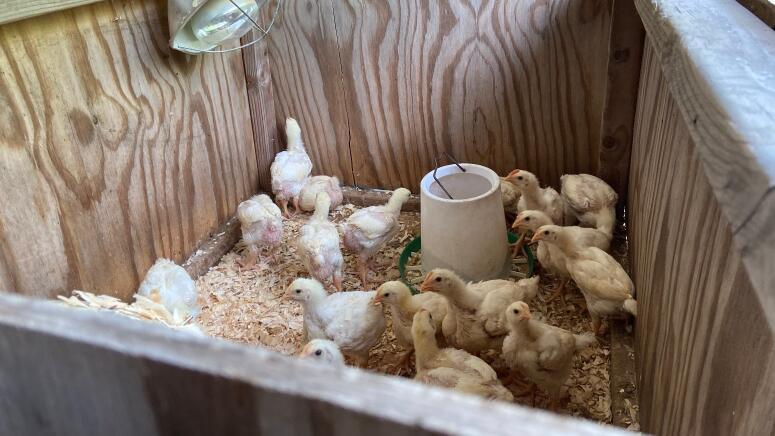
Posted by Candice Johns, Fri, Feb 26, 2016; Updated 3/13/2023
I don’t know about your neck of the woods, but around here it’s baby chick time. They are at all the farm stores. They are at the feed mill. They are at the horse supply. Here a chick, there a chick, everywhere a chick chick.
Baby chicks, baby ducks, baby guineas and baby poultry are everywhere! The easiest way to care for baby chicks is to let the hen do it for you. The hen keeps the baby chicks warm, teaches them how to drink, and even shows them how to scratch and peck for food.
If you don’t have a broody hen to take care of the baby chicks, you will need to do these things for them.
Raising baby chicks is easy. Raising baby chicks is inexpensive. Raising baby chicks is rewarding and fun. You can do this!
There are entire books written about raising chickens. Today, I am going to boil all those books down into three easy steps. Here’s all you need to know in order to get started with baby chicks:
Must-Have Baby Chick Supplies
- Heat
- Food and water
- Something to live in
Baby chicks are usually sent home in a small box. Our local farm supply stores have a minimum of six chicks per order. The baby chicks will keep each other warm with their body heat during the trip home. Once they get to their new home, they will need some special chick care.

#1: Heat
The most important thing is to keep them warm—really warm. Most baby chicks don’t die from illness, lack of food or dehydration, but are far more likely to die from being cold. A 70° barn, garage or home is too cold for them. They need mama-hen temperature, which is much warmer.
Since you are not a mama hen, you will need a brooder. A brooder is a heated enclosure in which young chicks (or any fowl) are raised. A brooder need not be fancy or expensive. It can be as simple as a metal tub with a heat lamp above the chicks to keep them toasty.
After the heat lamp is installed, observe the chicks. If the chicks are all huddled together directly underneath the heat lamp, they’re too cold. Move the lamp closer to the ground. If they are on the other side of the cage trying to get away from the heat lamp, they’re too hot.
Raise the lamp up away from the ground. If they are freely moving about the cage, coop or container, they are comfortable. The heat lamp is in the right spot.
As the chicks grow, they won’t need as much heat. Keep an eye on them. Continue to adjust the heat lamp as they grow and become less dependent on it for warmth.

#2: Food and Water
This is easy—give them food. There are several feeders available that work great. I like to use a feeder that uses a Mason jar because I have hundreds of them.
To use a Mason jar feeder, fill the jar with baby chick starter, screw on the bottom and turn it upside down. The food will be gravity fed into the bottom as the chicks eat it.
Water
I use a chicken waterer that also features a Mason jar (since I am long on them). It works the same way as the Mason jar–style feeder: Fill the Mason jar with water, screw the bottom on, turn it upside down and place it in the brooder.
If you haven’t yet heard, chickens are not that bright. You’ll learn this soon enough once you get yours. You could provide three gallons of water in the middle of their brooder, and they could still die from dehydration unless someone shows them where the water is.
To ensure that the chicks know where the wet stuff is, dip their beaks in the water.

#3: Housing
Our babies usually begin their lives on our farm, residing in a large storage tub in an upstairs bathroom. This is convenient since we enjoy visiting our little yellow fluffballs regularly. Once they learn how to fly out of the container, hop around the room and poop on things I don’t want poop on, they get to relocate to the barn where we have a larger brooder.
You can use a bunny hutch, a metal bin, a stock tank, a homemade coop or many other creative systems for the brooder. Make sure that there is plenty of air circulation and they can’t fly out.
That’s it: Food, water and a heated home (brooder).
We check on the babies at least twice a day to give them food, water, and fresh bedding, adjust the heat lamp, and take care of anything else they need.
How to Raise Baby Chicks Using an Egg Incubator
An alternative to buying baby chicks at a feed store or via a catalog is to hatch your own using an incubator. Check out this video from YolkTube by City Yolks that breaks down the supplies, tools and instructions you'll need to hatch your very own baby chicks!
Author Profile: Candice Johns
Candi has spent many years growing and striving toward a more self-sufficient life. She grows vegetables, kills chickens, swims with pigs, milks a cow, and loves anything homesteading. She lives out in the country with her husband and 4 awesome children. She likes doing things the old fashioned way.
More Blogs from Candice:
- https://www.mannapro.com/homestead/raising-pigs-for-meat
- https://www.mannapro.com/homestead/bottle-feeding-calves

Feature Products

